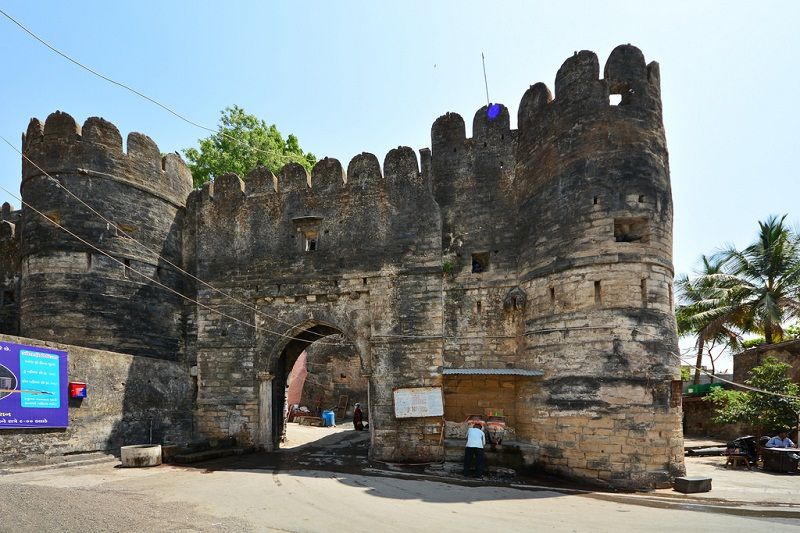Upperkot Fort, Junagadh
|
 |
|
Upperkot Fort
Upperkot Fort also known as
the Upper Fort is located on
the eastern side of Junagadh.
This fort was built in 319
BC by Chandragupta Maurya,
though it has been rebuilt
and extended many times over
the centuries. During the
period, various enemies
tried to capture the fort
but it can not be captured
by any of the king for a
longer time. The king of Anhilwad Patan once attacked
Junagadh to win the Raja’s
wife. He won the battle only
because one of the Raja’s
ministers betrayed him, but
he could not win the wife of
the Raja as she committed
Sati. This fort was the
stronghold of the Mauryans
and Gupta empire and as such
has survived for 16 sieges
in the last 1000 years due
to its strategic location
and difficult access.
|
|
The entrance to the fort is
formed by an ornate triple
gateway. This gateway is a
fine specimen of the Hindu
Toran, leading to flat land
dotted with various
archeological sites. In some
of the places, the walls of
this fort are as high as 70
feet. The fort has many
interesting exhibits like
the canon guns placed on the
western wall and believed to
have been cast in Egypt. The
two step wells (Adi-Kadi Vav
and Navghan Kuvo), a tomb,
mosque and some ancient
Buddhist caves belonging to
200 BC to 200 AD are located
within the fort premises.
Now only, some of the ruins
of the buildings, Jama
Masjid and the Buddhist
caves are located within the
fort premises.
Adi-Kadi Vav and Navghan
Kuvo are the two step
wells which are located
within the fort. These
wells were built by the
Chudasama Rajputs and
are the unique water
structures among the
various step wells of
Gujarat. Both these
wells served as the main
sources of drinking
water during the sieges
lasting for years and
were the essential part
of the basic need of the
fort. The Adi-Kadi Vav
has a long flight of 120
steps which lead to the
water and was built in
the 15th century. While
the Navghan Kuvo of 1026
AD is hewn from soft
rock and is 52 meter
deep, reached by a
circular staircase
winding around the
shaft. The Buddhist
caves are fine examples
of rock cut
architecture. These
caves have ornamented
pillars, carved
entrances, water
cisterns, chaitya hall,
monastic cells for
meditation and chaitya
windows.
|
|
|
|
|
|